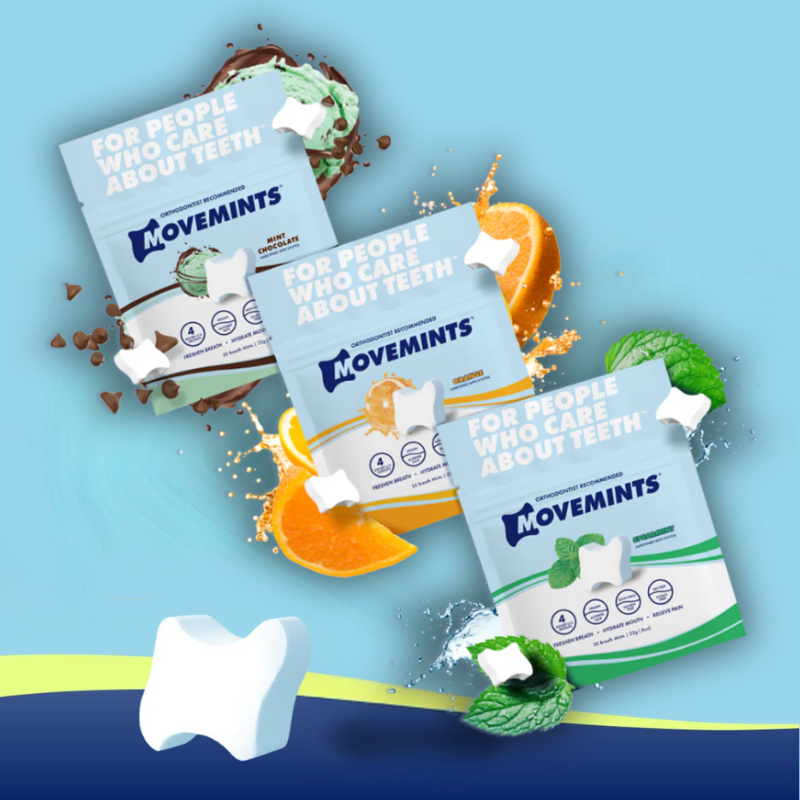Can You Eat with Dental Wax? Practical Tips and Guidance
Dental wax is an essential tool that provides immediate relief for minor irritations caused by braces, clear aligners, and other dental appliances.
As orthodontic specialists, we often get asked if dental wax is safe to use while eating and whether food particles get stuck in the wax. In this article, we'll share some practical guidance on using dental wax effectively and safely.
What is Dental Wax and Its Uses?
Dental wax contains natural waxes, including paraffin, beeswax, or carnauba wax. This type of wax is specifically made for dental applications. It is a non-toxic, soft, pliable wax that is solid at room temperature but quickly softens when warmed by hand.
Dentists and orthodontists recommend dental wax to provide temporary relief from irritations on the soft tissues of the mouth caused by brackets, wires, and other appliances rubbing against the cheeks and gums.
Unless it is too painful to eat without the wax, it is advisable to remove it before eating to avoid accidental ingestion and to maintain good oral hygiene. If you must eat while using it, simply remove it afterward and reapply fresh dental wax after eating to continue providing protection and comfort.
Dental Wax for Clear Aligners and Braces
Both clear aligners and traditional braces can sometimes have sharp edges that rub and poke the tongue or cheeks. By rolling a small ball of the orthodontic wax and gently pushing it onto these areas, the wax provides a smooth barrier for immediate pain relief. The wax is also handy for minimizing the discomfort caused by protruding metal brackets and wires.
How to Apply Dental Wax for Invisalign Discomfort
While clear aligner treatment is generally more comfortable than traditional braces, Invisalign patients may still experience some irritation on the tongue, cheeks, or gums. Here’s how to effectively use dental wax to relieve common Invisalign discomfort:
Preparing the Mouth and Aligners
Before applying the wax, thoroughly brush and rinse out the mouth. Hands should also be freshly cleaned to prevent bacteria transfer. Aligners should be removed, brushed clean, rinsed, and dried completely to maximize wax adhesion.
Applying Dental Wax to Sharp Edges
When dealing with sharp edges on aligners, the goal is to create a barrier between the aligner and your oral tissues. To do this, pinch off a small piece of wax, warm it between your fingers to make it malleable, and then press it firmly against the problematic part of the aligner. The wax should be applied in a thin layer, just enough to cover the sharp edge or point that is causing the irritation.
Removing Dental Wax from Aligners
To remove dental wax from aligners, first use your fingernail to peel off the excess wax. Then, hold the aligner under warm running water and gently scrub away any remaining wax residue with a soft-bristled toothbrush or an aligner cleaning brush. Avoid using hot water, as it can warp the aligner trays. Be sure to thoroughly clean aligners after wax removal to eliminate any bacteria that may get trapped under the wax.
Dental Wax Safety and Hygiene Tips
Maintaining dental hygiene is crucial when using dental wax with aligners to ensure a healthy mouth environment and successful orthodontic treatment.
Replacing Dental Wax Regularly
To prevent bacteria buildup under dental wax, it's vital to replace wax at least twice daily. Wax should also be changed after eating. Reusing the same wax for over 24 hours allows bacteria to multiply, risking decay and infection. Use fresh wax whenever discomfort occurs for best hygiene.
Cleaning Aligners After Wax Removal
To eliminate any bacteria that may get trapped under dental wax, it's important to thoroughly clean aligners after removing the wax. We recommend holding the aligners under warm running water while gently scrubbing away any remaining wax residue with a soft-bristled toothbrush or an aligner cleaning brush.
Once the wax is removed, Smilesaver™ spray offers a convenient way to eliminate bacteria and neutralize odor. It's ideal for individuals on-the-go. This spray provides quick and easy oral hygiene!
Movemints: Alternative Solution for Aligner Discomfort
Beyond the use of dental wax, there are products available to increase comfort with aligners, such as the clear Xylitol Mints from Movemints.
Movemints are a unique and tasty sugar free, aligner-safe xylitol mint designed specifically for use with clear aligners like Invisalign. The Movemint's patented grooved shape allows it to fit perfectly between the top and bottom aligners.
After gently biting down, the aligners will move into the proper position. As an orthodontist-designed product made with tooth-friendly xylitol, Movemints help seat aligners properly while freshening breath and fighting plaque buildup.
Frequently Asked Questions
Can dental wax be swallowed?
Dental wax is non-toxic, so if you accidentally swallow a small amount, it won't harm you. However, as orthodontists, we do not recommend purposefully chewing and swallowing dental wax. If the wax is swallowed, drink plenty of water to help pass the wax through the digestive system. Seek medical attention if you experience any discomfort after accidentally swallowing dental wax.
How often should I change dental wax?
To prevent bacteria buildup under the wax, replace dental wax at least twice daily, or more. Dental wax should also be changed after eating. Using the same wax for over 24 hours allows bacteria to multiply, risking tooth decay and infection. For best results, always use fresh wax.
Can dental wax be used with other oral appliances?
Yes, dental wax can provide relief from many other orthodontic appliances that may rub or poke the soft tissues of the mouth, such as retainers or mouthguards. Simply apply a small amount to the irritating areas as needed to protect the mouth and ease discomfort.





